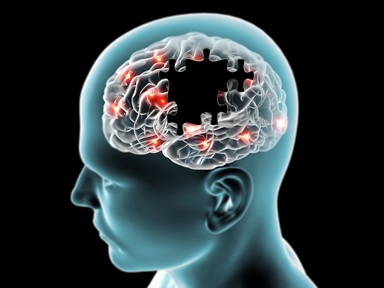Alzheimer's disease associated with transmission of protein found in growth hormone injections
Fragments of proteins found in the brains of people with Alzheimer’s disease could be spread to others via injections of a human growth hormone and contaminated surgical instruments, finds a study published in journal ‘Nature’.
The protein beta-amyloid was observed in seven of the eight cases examined, suggesting that they may have gone on to develop Alzheimer’s disease had they lived longer.

Dr Doug Brown, director of research at Alzheimer’s Society, said: “While these findings are interesting and warrant further investigation, there are too many unknowns in this small, observational study of eight brains to draw any conclusions about whether Alzheimer’s disease can be transmitted this way.
“Notably, while seven of the eight brains studied had beta-amyloid deposits – a protein found in the brains of people with Alzheimer’s disease - the presence of this alone does not mean that they would have gone on to develop the disease.”
He added: “Injections of growth hormone taken from human brains were stopped in the 1980s. There remains absolutely no evidence that Alzheimer’s disease is contagious or can be transmitted from person to person via any current medical or dental procedures.”
Growth hormone extracted from brains of the deceased were given to 1,848 people in the UK between 1958 and 1985 but the practice was discontinued when it was found to cause the prion disease Creutzfeldt-Jakob Disease (CJD) in 3.6 per cent of patients.
Creutzfeldt-Jakob disease (CJD) is a rare and fatal condition that affects the brain. It can cause a range of symptoms including loss of intellect and memory, change in personality and blindness.
Professor Collinge and colleagues at University College of London examined the brains of eight people who received human growth hormone injections and died with CJD aged between 36 to 51 years of age.
The Alzheimer’s protein beta-amyloid was present in seven of the eight brains, with widespread deposits observed in four cases. Researchers suggested that although beta-amyloid deposits can occur with natural ageing, it is unusual to see them to this extent in the brains of people in this age range.
However, research findings have revealed that none of the brains examined had any evidence of neurofibrillary tangles, which is a second key hallmark of Alzheimer’s disease, neither was there any evidence of Alzheimer’s disease in their clinical records.
Alzheimer’s Society research shows that 850,000 people in the UK have a form of dementia. In less than ten years one million people will be living with dementia, which is expected to soar to two million people by 2051.
Latest News
 29-Jul-24
Dementia Bus gives carehome.co.uk staff insight into life with dementia
29-Jul-24
Dementia Bus gives carehome.co.uk staff insight into life with dementia
 01-Mar-24
Find out the top care homes in 2024
01-Mar-24
Find out the top care homes in 2024
 21-Mar-23
UK's top care homes in 2023 revealed
21-Mar-23
UK's top care homes in 2023 revealed
 03-Jan-23
carehome.co.uk launches free care helpline
03-Jan-23
carehome.co.uk launches free care helpline
 13-Dec-22
5 mins with Emily Whitehurst, chief operating officer for Constantia Healthcare
13-Dec-22
5 mins with Emily Whitehurst, chief operating officer for Constantia Healthcare